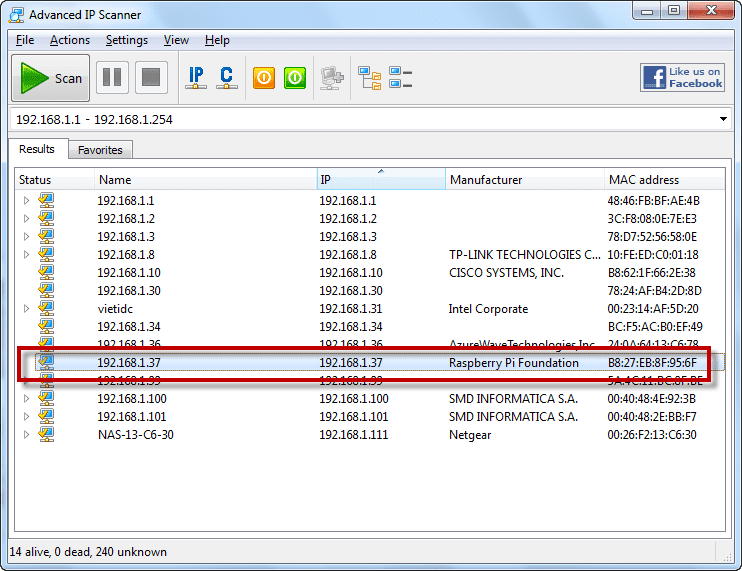

- Advanced ip scanner raspberry pi mac os#
- Advanced ip scanner raspberry pi install#
- Advanced ip scanner raspberry pi update#
- Advanced ip scanner raspberry pi software#
We don’t want to connect a keyboard and monitor to our Raspberry Pi everything we need to update or change something. Otherwise, you can skip this step and continue with Step 2. This step is only required when you haven’t enabled SSH in the Raspberry Pi Imager tool. You will get a warning that all data will be removed, click Ok and get a coffee 😉.Set username and password for SSH connection.Click on Settings (Gear icon) in the lower-right corner.Select your MicroSD card (check the size and drive letter!).Place the MicroSD card in your computer and open Raspberry Pi Imager:
Advanced ip scanner raspberry pi install#
We are going to install the 64-bit lite version of Raspberry Pi OS, this version comes without a desktop which we don’t need. The advantage of this tool is that we can select the Raspbian version we want to install, enable SSH and configure the wireless network. We will use the Raspberry Pi Imager to easily install the correct Raspbian OS version. Step 1 – Getting the Raspberry Pi up and runningįirst, we are going to start by installing Raspbian on de MicroSD card.
Advanced ip scanner raspberry pi software#
These are the fastest at the moment with 10MB/sec.ĭownload the following software to get started: You can use a Model 3B, but if you have to buy one new I recommend getting a Model 4BĪlso, you are going to need a MicroSD card, buy atleast a class A 2 card. Of course, we need to buy a Raspberry Pi. What do we need for the Unifi Controller and Raspberry Pi?īefore we can start with installing the Unifi Controller on the Raspberry Pi we need to get some parts and download some software. The installed version of UniFi controller is 7.4.156 during the test. This article fixed the problem with MongoDB and is based on Raspbian OS Lite 64-bit. Note I have updated and tested this article on Jun 29th, 2023. In this article, I will help you install the Unifi Controller on the Raspberry Pi step-by-step in 5 minutes. To do this I need to Unifi Controller to be running 24/7, so I needed a device to run the Unifi Controller on, something small, cheap, and with low running costs. If you can login to your router configuration page, you shall also find the ip address of the raspberry pi devices under the attached device section.I have some smart products at home and one of the things I wanted to do is read out the connected WiFi devices. Here you can see a device with hostname raspberrypi has IP address 192.168.1.7. Nmap done: 256 IP addresses (4 hosts up) scanned in 2.41 seconds Nmap scan report for raspberrypi (192.168.1.7) Nmap scan report for ubuntu (192.168.1.5) Nmap scan report for Gordons-MBP (192.168.1.4) Nmap scan report for hpprinter (192.168.1.2) For each device that responds to the ping, the output shows the hostname and IP address like so: Starting Nmap 6.40 ( ) at 12:46 GMT Ping scan just pings all the IP addresses to see if they respond. This may take a few seconds: nmap -sn 192.168.1.0/24 Now use the nmap command with the -sn flag (ping scan) on the whole subnet range. Now you have the IP address of your computer, you will scan the whole subnet for other devices.

On Windows, go to the Control Panel, then under Network and Sharing Center, click View network connections, select your active network connection and click View status of this connection to view the IP address.On Mac OS, go to System Preferences then Network and select your active network connection to view the IP address.
Advanced ip scanner raspberry pi mac os#



 0 kommentar(er)
0 kommentar(er)
